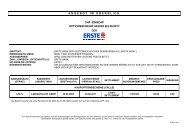GB00_erste lage_E - Erste Group
GB00_erste lage_E - Erste Group
GB00_erste lage_E - Erste Group
Create successful ePaper yourself
Turn your PDF publications into a flip-book with our unique Google optimized e-Paper software.
Risks at <strong>Erste</strong> Bank Market risk<br />
Fluctuations in interest rates, exchange rates, share prices and commodities prices create market<br />
risks. Market risks derive from short-term trading (Trading Book) in instruments whose prices are<br />
fixed daily as well as from the traditional banking business (Banking Book).<br />
Taking into consideration the Bank’s risk-absorbing capacity and projected earnings, the Management<br />
Board as a whole manages the aggregate limits as part of its work on the Risk Committee.<br />
The aggregate limits are then distributed by the responsible Management Board member and Central<br />
Risk Management department based on a recommendation from the decentralised unit for<br />
Market Risk Management in the Market Risk Committee. All market risk limits in <strong>Erste</strong> Bank are<br />
statistically consistent with the aggregate Value-at-Risk limit covering all market risks in <strong>Erste</strong><br />
Bank; limit compliance is checked at several levels: by decentralised local risk management units,<br />
invariably by market risk management and also by the Central Risk Management independent risk<br />
control unit.<br />
A key component in defining the limits is estimating the potential losses that could be caused<br />
by market movements. This so-called Value-at-Risk is calculated at the <strong>Group</strong> level on a daily basis<br />
and reported to the Management Board via <strong>Erste</strong> Bank’s electronic management information system<br />
on the basis of an historical simulation using the internationally recognised software KVAR+.<br />
In its analysis <strong>Erste</strong> Bank uses a 99% confidence interval and a holding period of one or ten days.<br />
Backtesting is used to constantly review the validity of the statistical methods applied.<br />
Unexpected market movements can have a great impact on the value of a trading position and<br />
result in significant losses or gains. Relying on purely statistical methods to measure risk, as is<br />
the case with Value-at-Risk, does not adequately take into account crisis situations and their consequences.<br />
Because of this, in addition to risk measurement applying Value-at-Risk <strong>Erste</strong> Bank<br />
also performs stress testing according to several methods (historical worst, extreme value theory,<br />
scenario analyses). These analyses are also relayed to the Management Board via the electronic<br />
management information system.<br />
<strong>Erste</strong> Bank 2000 109



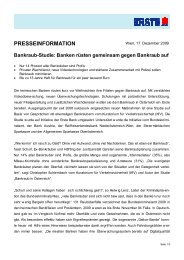
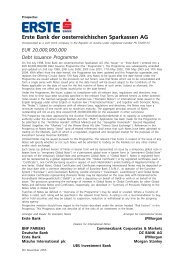
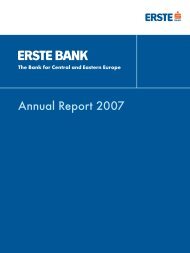
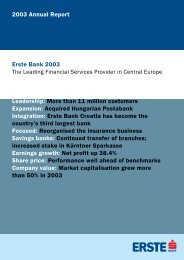


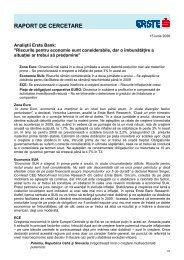
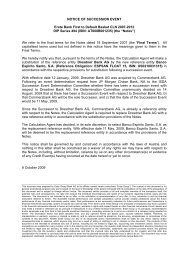

![Fact Sheet Erste Campus [pdf; 181.2 KB] - Erste Group](https://img.yumpu.com/3839392/1/184x260/fact-sheet-erste-campus-pdf-1812-kb-erste-group.jpg?quality=85)
